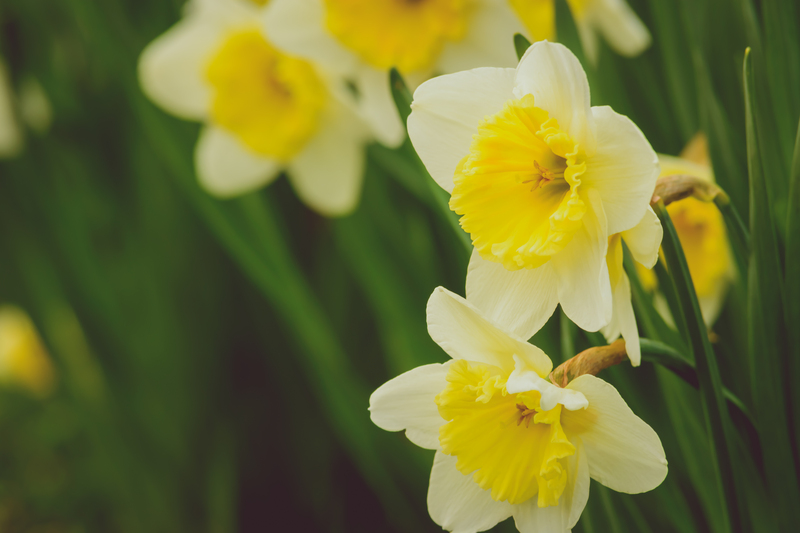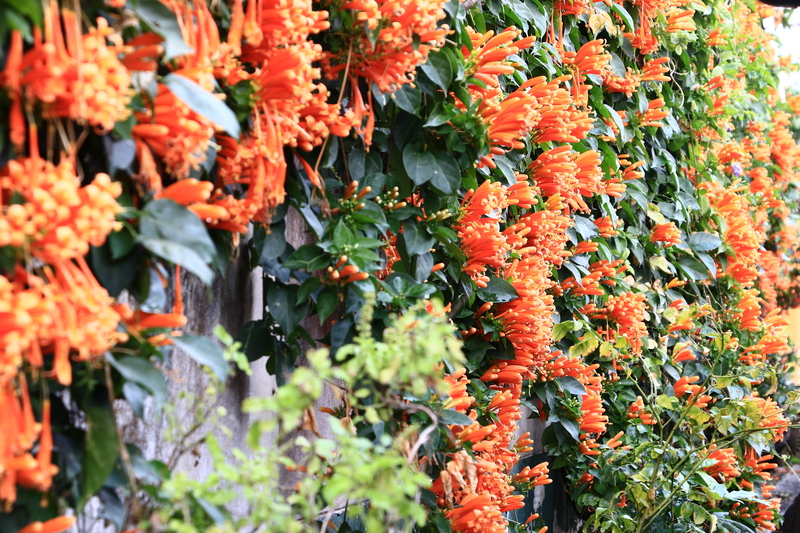Top Gardening Tools Every Outdoor Lover Must Have
Posted on 24/06/2025
Top Gardening Tools Every Outdoor Lover Must Have
For those who are passionate about cultivating a thriving outdoor space, having the right gardening tools isn't just a convenience--it's essential. The proper equipment helps save time, boost productivity, and ensure plants remain healthy. Whether you're a beginner or an expert horticulturist, knowing the must-have gardening tools will make all the difference. This comprehensive guide covers the top gardening equipment that every outdoor enthusiast should keep on hand.

Why High-Quality Gardening Tools Matter
A successful garden starts with the right tools. Quality implements increase efficiency and decrease physical strain, making gardening enjoyable and sustainable. They also help deliver precise results, from delicate planting to robust pruning. Investing in best-in-class garden tools means your plants are more likely to flourish all year round.
Benefits of Using Proper Gardening Implements:
- Increased Efficiency: Get more done with less effort and time.
- Better Plant Health: Avoid plant damage and help roots grow strong.
- Reduced Physical Strain: Ergonomic tools lower the risk of injury and fatigue.
- Long-Term Savings: Durable tools need less frequent replacement.
The Essential Gardening Tools List
To make outdoor work easier, here is a detailed list of top gardening tools every outdoor lover should own. Each item is suited to particular tasks--planting, pruning, digging, or harvesting--and described for clarity and best uses.
1. Garden Gloves
Protecting your hands is priority number one. A sturdy pair of garden gloves shields against thorns, blisters, chemicals, and insect bites. Look for breathable, water-resistant gloves with reinforced fingertips for long-lasting protection.
- Prevents cuts, scrapes, and blisters.
- Keeps hands clean and dry during wet conditions.
- Improves grip on tools and slippery vegetables.
2. Hand Trowel
The hand trowel is a versatile tool ideal for digging small holes, transplanting seedlings, and removing weeds. Its compact size makes it perfect for pots and raised beds. Select one with an ergonomic, comfortable handle and a strong, rust-resistant stainless steel or aluminum blade.
- Great for planting bulbs and bedding plants.
- Useful for soil aeration and fertilizer application.
- Compact and easy to store.
3. Pruning Shears (Secateurs)
For trimming shrubs, deadheading flowers, and shaping plants, pruning shears are indispensable. High-quality blades ensure clean cuts, reducing the risk of disease and promoting fast healing in stems. There are bypass and anvil styles--choose bypass for living plants and anvil for tougher, woody stems.
- Maintains plant shape and encourages healthy growth.
- Removes dead or damaged foliage efficiently.
- Essential for fruit and rose pruning.
4. Spade or Shovel
No garden is complete without a sturdy spade or shovel. These tools tackle digging, edging, and lifting heavy soil or compost. Spades have flat blades ideal for digging precise holes, while shovels have curved blades for scooping and moving loose material.
- Vital for digging, trenching, and turning soil.
- Great for transferring compost, mulch, and gravel.
- Look for long, comfortable handles and rust-resistant materials.
5. Garden Fork
A garden fork breaks up hard soil, incorporates organic matter, and lifts root vegetables with ease. Its sturdy tines are invaluable for loosening compacted earth without damaging plant roots.
- Perfect for aerating soil and mixing compost.
- Moves mulch and organic debris efficiently.
- Useful for dividing perennials or digging up potatoes and carrots.
6. Rake
There are two main types of rakes: a leaf rake with flexible tines for gathering debris, and a garden rake with stiff tines for smoothing soil. Both are essential for maintaining a tidy, productive garden.
- Collects leaves, grass clippings, and debris.
- Levels soil for planting and seed beds.
- Helps spread mulch evenly.
7. Watering Can or Garden Hose
Regular, appropriate watering is crucial for healthy gardens. A watering can gives precise control, ideal for indoor plants and delicate seedlings, while a garden hose with adjustable nozzle is perfect for larger areas.
- Keeps garden hydrated during dry spells.
- Prevents overwatering or water wastage with proper use.
- Look for ergonomic, lightweight designs for ease of use.
8. Wheelbarrow or Garden Cart
Transporting compost, soil, harvested crops, and supplies is much simpler with a wheelbarrow or garden cart. Choose a solid, well-balanced model with pneumatic tires for rough terrain and a rust-proof tray for longevity.
- Reduces strain on joints and back.
- Makes heavy lifting manageable.
- Ideal for landscaping projects or large gardens.
9. Garden Hoe
A garden hoe is a traditional tool for removing weeds, cultivating soil, and breaking up clods. There are various types, including draw hoes, stirrup hoes, and Dutch hoes--each suited to different tasks.
- Aids in creating furrows for planting seeds.
- Helps keep weeds under control with minimal effort.
- Prepares soil for optimal root development.
10. Loppers
For larger branches that pruning shears can't handle, loppers deliver the cutting power you need. Extended handles give leverage for cutting up to 2-inch thick branches, perfect for fruit trees and mature shrubs.
- Enables safe pruning of high or dense branches.
- Prevents plant diseases by making clean, sharp cuts.
- Lightweight designs reduce arm fatigue.
Bonus Gardening Tools for Dedicated Outdoor Enthusiasts
For those looking to elevate their gardening experience, consider adding a few specialized advanced gardening tools to your arsenal. These aren't essential for every gardener but offer significant benefits for ambitious projects.
Soil Testing Kit
Understanding your soil's pH and nutrient levels can inform what you plant and how you amend your beds. Soil testing kits are easy to use and help you grow robust, healthy plants tailored to your soil's needs.
Plant Labels and Markers
Keeping track of what you've planted--especially in large or experimental gardens--can be challenging. Waterproof plant labels help you identify seedlings and note planting dates or varieties for future reference.
Garden Kneeler or Pad
Save your knees and back with a padded garden kneeler. Some versions double as a seat or include pockets for storing small hand tools within reach.
Pruning Saw
For mature trees and thick branches, a pruning saw completes cuts that loppers cannot make, ensuring clean, safe maintenance.
Compost Bin
Turn kitchen scraps and yard waste into nutrient-rich compost using a dedicated compost bin. Regularly feeding your soil with organic material improves fertility, reduces landfill waste, and boosts garden health.
Tips for Choosing the Best Gardening Tools for Outdoor Spaces
Not all top-rated garden tools are created equally. When investing in equipment, keep the following considerations in mind for optimal performance and longevity.
- Material Matters: Stainless steel or forged aluminum resists rust and handles tough tasks.
- Comfort & Ergonomics: Cushioned, non-slip grips and good weight balance prevent injury and fatigue.
- Size & Suitability: Choose handles and blade sizes proportionate to your height and strength.
- Maintenance: Select tools that are easy to clean, sharpen, and store.
- Multi-Functionality: Some implements, like multi-tools, offer several uses in one device.
How to Care for Your Essential Garden Tools
Even the most best-selling garden tools require routine care to perform at their best. Taking a little time after each use greatly extends tool life and ensures safety.
- Always clean off soil and sap before storing.
- Dry tools thoroughly to prevent rust and wood rot.
- Sharpen cutting edges regularly for efficient trimming and pruning.
- Oil metal parts and wooden handles seasonally to preserve integrity.
- Hang or securely store tools to avoid accidents and weather exposure.
Gardening Tools for Specific Outdoor Activities
Your choice of must-have gardening gear may vary according to your gardening style:
Vegetable Gardeners
- Hand forks for working in raised beds
- Seed planters and dibbers for precise sowing
- Row markers to keep track of varieties
Flower Growers
- Deadheading snips for regular pruning
- Bulb planters for effortless seasonal changeovers
- Sprinkler systems for regular watering
Tree and Shrub Care
- Tree pruners and pole saws for higher branches
- Bark protectors and ties for supporting saplings
- Large digging spades for planting young trees

Frequently Asked Questions About Must-Have Garden Tools
Q: How can I save money on gardening tools without sacrificing quality?
A: Research reviews and purchase top gardening equipment during end-of-season sales or invest in multi-use tools. Prioritize durability and comfort over brand name.
Q: What are the most important tools for small-space gardens?
A: In compact gardens or patios, focus on a hand trowel, pruners, watering can, and compact rake. Multi-purpose tools and stackable storage units help reduce clutter.
Q: How often do I need to replace my tools?
A: With proper care and storage, high-quality gardening tools can last many years. Replace items if they develop cracks, severe rust, or loose components that compromise safety or effectiveness.
Conclusion: Equip Yourself with the Best Gardening Tools
Choosing the right gardening implements is a game-changer for anyone who loves spending time outdoors. With this essential checklist, you can cultivate a lush garden more efficiently, safely, and enjoyably. Invest in quality, maintain your gardening tools with care, and your outdoor haven will reward you all year long.
Happy gardening!

